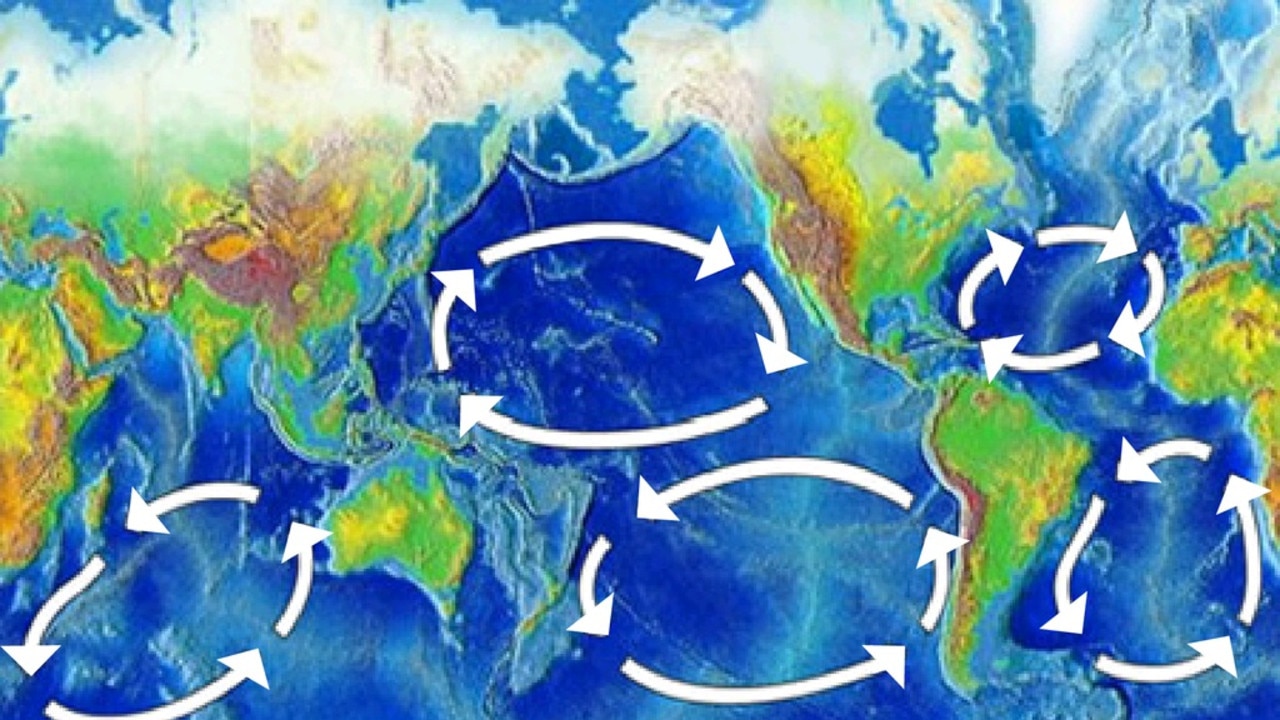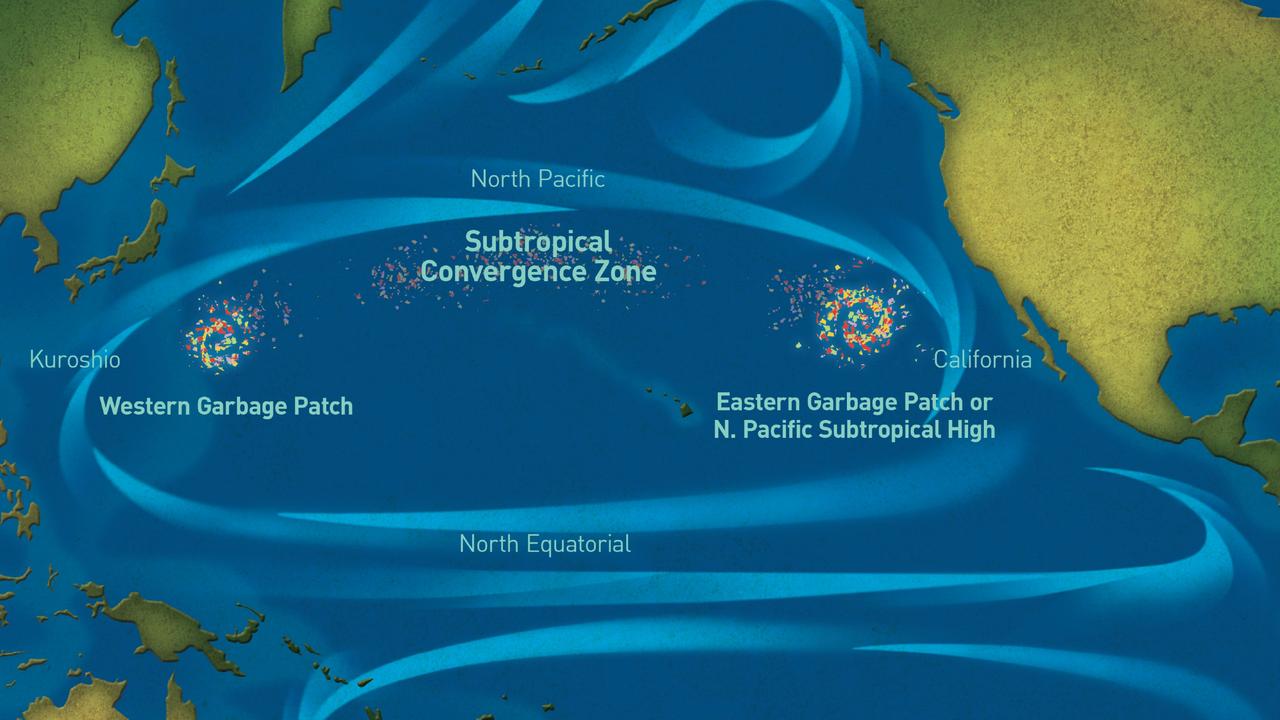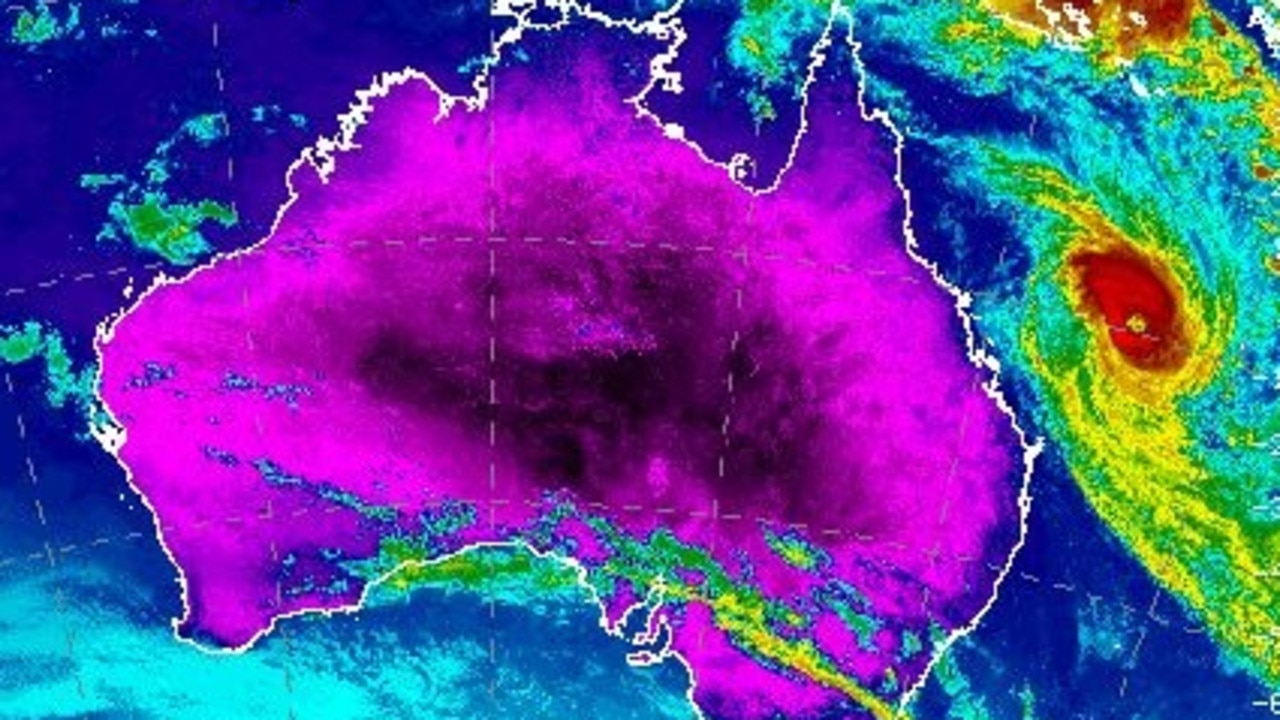Surprise as scientists find thriving sea life in Great Pacific Garbage Patch
Scientists have found something totally unexpected in the Great Pacific Garbage Patch located in the middle of the ocean.

Scientists studying the Great Pacific Garbage Patch have made an unexpected discovery.
The notorious area of the North Pacific Ocean gained the gross name because of the amount of rubbish that has collected in the area. It’s not a giant pile of rubbish floating in the ocean, rather it’s trash that is mostly fingernail-sized or smaller — often microscopic — that has been pushed into the location due to ocean currents.

Scientists studying the region have found coastal species of shellfish and anemones living and breeding in the rubbish, thousands of kilometres away from home, a study revealed on Monday.
Environmentalists have for years been eyeing what they call the Great Pacific Garbage Patch — masses of plastic rubbish combining bottles, fishing nets and much more.
US researchers who sampled rubbish from the northeastern Pacific between California and Hawaii said they found 37 kinds of invertebrates that originated from coastal areas, mostly from countries such as Japan on the other side of the ocean.

“The high seas are colonised by a diverse array of coastal species, which survive and reproduce in the open ocean,” they wrote in the study, published in Nature Ecology and Evolution.
“Coastal species persist now in the open ocean as a substantial component of a neopelagic (new, sea-dwelling) community sustained by the vast and expanding sea of plastic debris,” the study said.
More than two-thirds of the items examined had coastal species on them, including crustaceans, sea anemones and moss-like creatures called bryozoans.
Scientists had not often tracked creatures surviving dispersal across entire oceans. The researchers noted that in one rare event in 2012, debris from the previous year’s tsunami in Japan washed ashore in North America bearing living species.

Creatures can spread quickly by feeding on the layers of slime formed on floating plastics by bacteria and algae, the study said.
It said more research was needed to understand how these coastal colonists might fit into the ocean food chain.
In a 2021 article, members of the same research team warned that the influx of invasive coastal species “might portend significant ecological shifts in the marine environment”.
A study published in 2017 in the journal Science Advances calculated that if current production and waste-management trends continued, there would be 12 billion tonnes of plastic waste in landfills or the natural environment by 2050.
G7 energy and environment ministers declared at the end of talks in Japan on Sunday their “ambition to reduce additional plastic pollution to zero by 2040”.
They said they hoped to draw up an “international legally binding instrument on plastic pollution” by the end of 2024.
- with AFP





